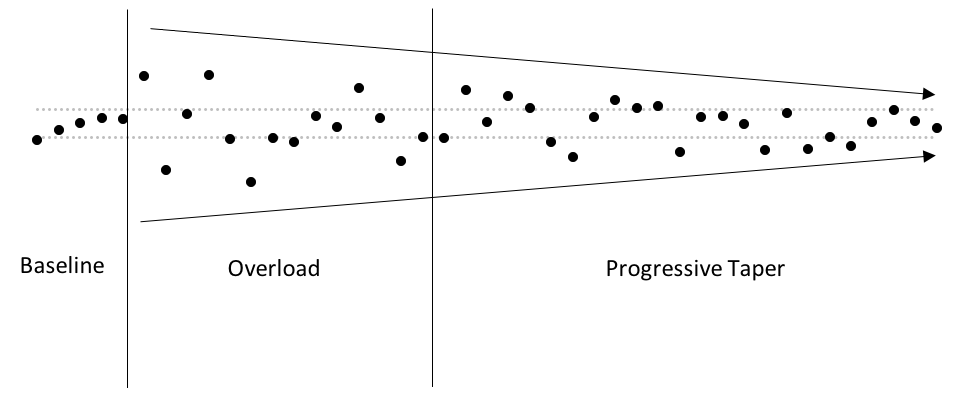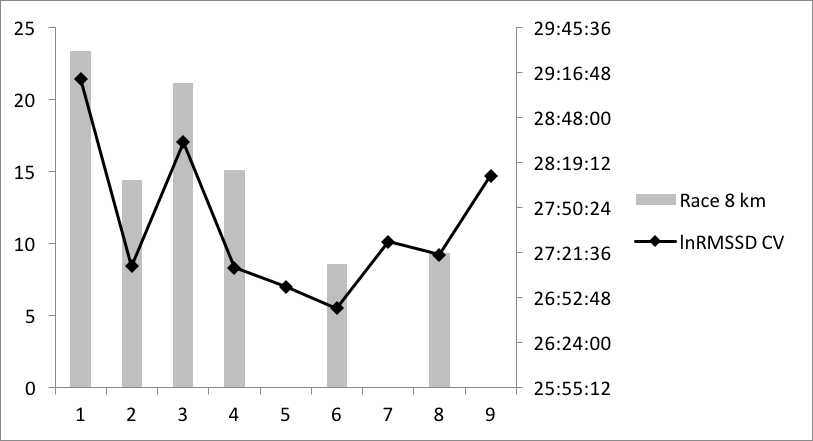References
1. Kiviniemi AM, Hautala AJ, Kinnunen H, Tulppo MP. Endurance training guided individually by daily heart rate variability measurements. European journal of applied physiology. 2007;101(6):743-751.
2. Buchheit M, Chivot A, Parouty J, et al. Monitoring endurance running performance using cardiac parasympathetic function. European journal of applied physiology. 2010;108(6):1153-1167.
3. Plews DJ, Laursen PB, Kilding AE, Buchheit M. Evaluating training adaptation with heart-rate measures: a methodological comparison. International journal of sports physiology and performance. 2013;8(6):688-691.
4. Le Meur Y, Pichon A, Schaal K, et al. Evidence of parasympathetic hyperactivity in functionally overreached athletes. Med Sci Sports Exerc. 2013;45(11):2061-2071.
5. Plews DJ, Laursen PB, Kilding AE, Buchheit M. Heart rate variability in elite triathletes, is variation in variability the key to effective training? A case comparison. European journal of applied physiology. 2012;112(11):3729-3741.
6. Stanley J, D’Auria S, Buchheit M. Cardiac parasympathetic activity and race performance: an elite triathlete case study. International journal of sports physiology and performance. 2015;10(4):528-534.
7. Vesterinen V, Nummela A, Heikura I, et al. Individual Endurance Training Prescription with Heart Rate Variability. Medicine and science in sports and exercise. 2016.
8. Buchheit M, Mendez-Villanueva A, Quod MJ, Poulos N, Bourdon P. Determinants of the variability of heart rate measures during a competitive period in young soccer players. European journal of applied physiology. 2010;109(5):869-878.
9. Boullosa DA, Abreu L, Nakamura FY, Muñoz VE, Domínguez E, Leicht AS. Cardiac autonomic adaptations in elite Spanish soccer players during preseason. International journal of sports physiology and performance. 2013;8(4):400-409.
10. Flatt AA, Esco M, Nakamura FY, Plews DJ. Interpreting daily heart rate variability changes in collegiate female soccer players. The Journal of sports medicine and physical fitness. 2016.
11. Hautala A, Tulppo MP, Mäkikallio TH, Laukkanen R, Nissilä S, Huikuri HV. Changes in cardiac autonomic regulation after prolonged maximal exercise. Clinical Physiology. 2001;21(2):238-245.
12. Seiler S, Haugen O, Kuffel E. Autonomic recovery after exercise in trained athletes: intensity and duration effects. Medicine and science in sports and exercise. 2007;39(8):1366.
13. Stanley J, Peake JM, Buchheit M. Cardiac parasympathetic reactivation following exercise: implications for training prescription. Sports medicine (Auckland, NZ). 2013;43(12):1259-1277.
14. Plews DJ, Laursen PB, Kilding AE, Buchheit M. Heart-rate variability and training-intensity distribution in elite rowers. International journal of sports physiology and performance. 2014;9(6):1026-1032.
15. Schmitt L, Regnard J, Desmarets M, et al. Fatigue shifts and scatters heart rate variability in elite endurance athletes. PloS one. 2013;8(8):e71588.
16. Flatt AA, Esco MR. Smartphone-Derived Heart-Rate Variability and Training Load in a Women’s Soccer Team. International journal of sports physiology and performance. 2015;10(8):994-1000.
17. Flatt AA, Esco MR. Endurance performance relates to resting heart rate and its variability: A case study of a collegiate male cross-country athlete. J Aus Strength Cond. 2014;22:39-45.
18. Flatt AA, Esco MR, Nakamura FY. Individual heart rate variability responses to preseason training in high level female soccer players. Journal of strength and conditioning research/National Strength & Conditioning Association. 2016.
19. Bellenger C, Karavirta L, Thomson R, Robertson E, Davison K, Buckley J. Contextualising Parasympathetic Hyperactivity in Functionally Overreached Athletes With Perceptions of Training Tolerance. International journal of sports physiology and performance. 2015.
20. Lehmann M, Foster C, Dickhuth H-H, Gastmann U. Autonomic imbalance hypothesis and overtraining syndrome. Medicine and science in sports and exercise. 1998;30(7):1140-1145.
21. Plews DJ, Laursen PB, Le Meur Y, Hausswirth C, Kilding AE, Buchheit M. Monitoring training with heart rate-variability: how much compliance is needed for valid assessment? International journal of sports physiology and performance. 2014;9(5):783-790.
22. Al Haddad H, Laursen P, Chollet D, Ahmaidi S, Buchheit M. Reliability of resting and postexercise heart rate measures. International journal of sports medicine. 2011;32(08):598-605.
23. Nakamura FY, Pereira LA, Esco MR, et al. Intra-and inter-day reliability of ultra-short-term heart rate variability in rugby union players. Journal of strength and conditioning research/National Strength & Conditioning Association. 2016.
24. Nakamura FY, Pereira LA, Rabelo FN, et al. Monitoring weekly heart rate variability in futsal players during the preseason: the importance of maintaining high vagal activity. Journal of sports sciences. 2016:1-7.
 This is a guest post written by Andrew Flatt, Exercise Physiology PhD, Researcher, and Professor at the University of Alabama,
This is a guest post written by Andrew Flatt, Exercise Physiology PhD, Researcher, and Professor at the University of Alabama, 

